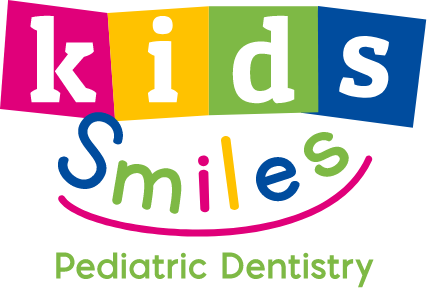Teething is an exciting milestone as it heralds the approaching milestone of introducing your baby to solid foods. Which may mean longer stretches of sleep are to come (for parents and babies alike). While parents may be elated and surprised that their baby is growing so fast, teething can be a challenging time for all! But don’t worry, the Kids Smiles Team is here to provide expert advice on how to soothe a teething baby.
What are some baby teething facts?
Your baby is teething when their first set of teeth (or primary teeth) break through the gums. This usually begins around 4 to 12 months old, starting with one of the front bottom teeth. The upper front teeth usually follow. The remaining teeth (20 total) will slowly come in until the child is about two and a half years old.
Baby teeth help maintain the space for permanent teeth and allow a toddler to:
- eat a nutritious diet
- speak properly
- have a healthy smile
What do teething symptoms look like?
- Irritability and fussiness
- Restlessness or difficulty sleeping
- Increased saliva and drooling
- Desire to chew on anything within reach
- Swollen, tender gums
The 6 best baby teething tips and tricks!
When your baby is crying or fussing, your first instinct as a parent is to comfort them and help fulfill their needs. But how can you relieve pain from teething? Here’s a few tried and true methods!
- Simple distractions. Many babies find cuddling, going on a walk outside (or inside around the house), rocking, or simple toys to be a welcome distraction from the discomfort of teething gums.
- Rub baby’s gums. Use a clean finger or washcloth to massage or rub baby’s irritated gums for 2 minute intervals.
- Offer a teething aid. A damp washcloth chilled in the fridge, a teething ring, or an infant toothbrush can be great ways for your baby to get some teething relief. Just be sure to keep an eye on them for their safety.
- Keep it cool. If your baby is already eating solid foods, it may enjoy cold items such as applesauce, pureed fruit, or yogurt. Frozen breastmilk or formula given in a mesh food feeder can also help soothe babies who aren’t quite ready for solid foods.
- Dry the drool. A bib will keep your baby’s face dry and prevent rashes. Keep a clean, dry cloth on hand for wiping drool.
- Over-the-counter remedies. If your child is over 6 months, you may try an infant acetaminophen (Tylenol) or ibuprofen (Motrin). Do not give a baby anything that contains aspirin, and be careful about teething gels that can be rubbed directly on a baby’s gums. Do follow the directions on the package and consult your pharmacist for any assistance.
How to soothe a teething baby at night
When your baby is teething during the night, parents and babies suffer restlessness. A few tips to help you both get a better sleep are by trying out the following:
- Comfort feeding. If your baby is still breastfeeding or bottle-feeding, offering a nighttime feed can help soothe them back to sleep. Bonus tip: try to massage their gums after feeding to help provide more relief and keep their gums clean.
- Rock or bounce your baby while they chew on a clean and cool teether.
- Give an age-appropriate pain reliever before bedtime.
How to soothe a 3-month-old teething baby
Yes, babies can start teething as early as 3 months! Just try out any of the tips we’ve offered and be aware of any age-restrictions on certain pain relievers and proper dosage information for their weight.
Still have questions about how to soothe a teething baby?
Please don’t hesitate to reach out to us with any questions about your child’s dental health care.
Looking for an expert pediatric dentist in Tampa Bay? Request your child’s appointment with us today.

